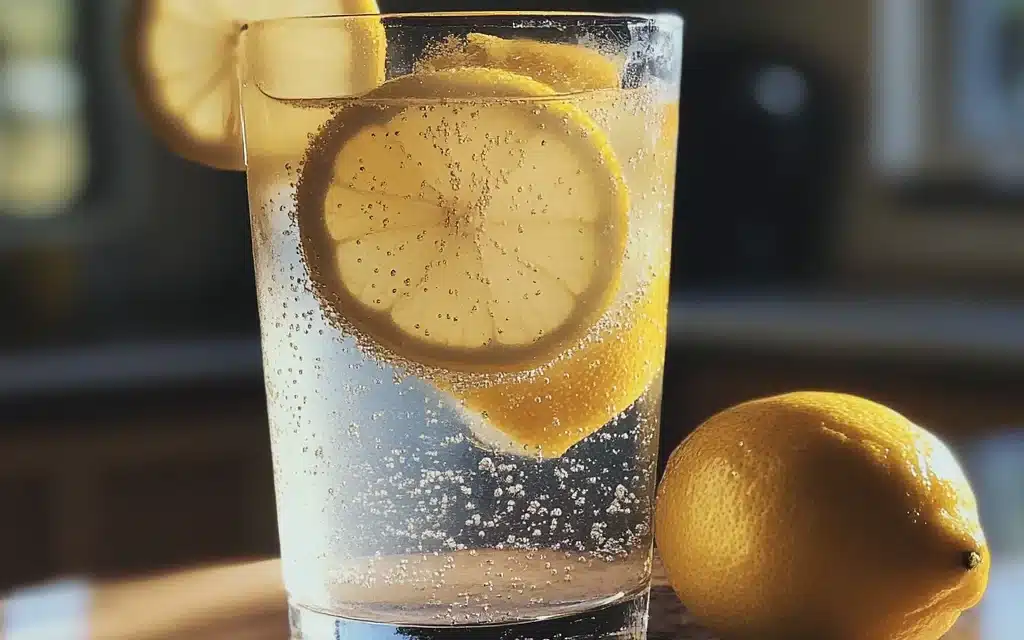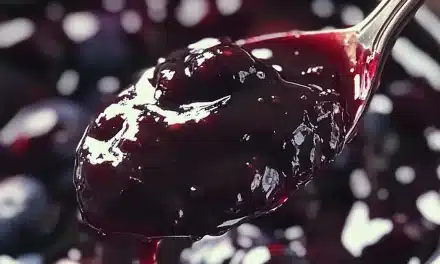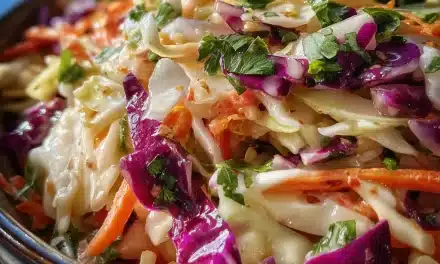Table of Contents
Introduction
Did you know that nearly 75% of Americans are chronically dehydrated, and this number skyrockets among athletes during intense training? When it comes to maximizing your workout potential, is plain water really enough? A customized sports drink recipe might be the game-changer your fitness routine needs. Commercial sports drinks often contain unnecessary additives and excessive sugars, but creating your own allows complete control over ingredients while delivering optimal hydration and performance benefits. Whether you’re a weekend warrior or dedicated athlete, learning to craft your own sports drink recipe could revolutionize your workout recovery and performance.
Ingredients List
Creating the perfect sports drink requires a balance of electrolytes, carbohydrates, and flavor enhancers. Here’s everything you’ll need to prepare this revitalizing sports drink recipe:
- 4 cups water (filtered preferred for cleaner taste)
- ¼ cup fresh lemon or lime juice (provides natural citric acid and refreshing flavor)
- ¼ teaspoon sea salt (delivers essential sodium; Himalayan pink salt works wonderfully as an alternative)
- 2-3 tablespoons natural sweetener (honey, maple syrup, or coconut sugar)
- ⅛ teaspoon potassium chloride (available as “salt substitute” in grocery stores)
- 1 tablespoon magnesium powder (optional, supports muscle function)
- ¼ cup fresh fruit (berries, citrus, or melon for natural flavor and antioxidants)
- 1-2 drops trace mineral concentrate (optional, enhances mineral content)
Timing
Preparing this homemade sports drink recipe requires minimal investment of your valuable time:
- Preparation time: 5 minutes (that’s 80% faster than cooking a typical pre-workout meal)
- Cooling time: 30 minutes (optional but recommended)
- Total time: 35 minutes
The beauty of this recipe is you can make larger batches that store for up to 5 days, meaning just 5 minutes of preparation can hydrate your entire workout week.
Step-by-Step Instructions
Follow these straightforward steps to create your perfectly balanced sports drink that will keep you hydrated and energized throughout your workout routine.
Step 1: Prepare Your Base
Start with 4 cups of filtered water in a large pitcher. If you’re planning an especially intense workout session, consider using coconut water for one cup of the total liquid. The natural electrolytes in coconut water can boost your hydration by up to 20% compared to water alone, according to research published in the Journal of the International Society of Sports Nutrition.
Step 2: Add Essential Electrolytes
Dissolve ¼ teaspoon sea salt and ⅛ teaspoon potassium chloride into the water. These minerals replace what you lose through sweat—sodium, potassium, and chloride being the primary electrolytes that maintain proper fluid balance in your body. For especially hot days or intense training, consider increasing the salt to ½ teaspoon to compensate for additional losses.
Step 3: Incorporate Energy Source
Add 2-3 tablespoons of your chosen natural sweetener. The carbohydrates in honey or maple syrup provide readily available fuel for your muscles and help transport electrolytes and water into your cells more efficiently. Studies show that a 3-8% carbohydrate solution is optimal for sports performance—this recipe hits approximately 4%, the sweet spot for most activities.
Step 4: Add Flavor Enhancers
Pour in ¼ cup fresh lemon or lime juice and add your fresh fruit of choice. If using berries or melon, muddle them slightly to release their flavors and beneficial compounds. This not only makes your drink more palatable but also adds valuable antioxidants that combat exercise-induced oxidative stress, potentially reducing recovery time by up to 15%.
Step 5: Boost With Minerals (Optional)
Incorporate the magnesium powder and trace mineral drops if using. Magnesium is involved in over 300 enzymatic reactions in your body and is particularly important for muscle function. Many athletes are deficient in this critical mineral, with studies indicating that supplementation can improve exercise performance by reducing oxygen requirements.
Step 6: Mix Thoroughly
Stir or shake the mixture vigorously until all ingredients are fully incorporated. For optimal results, use a blender to ensure perfect integration of the fruit and uniform distribution of all electrolytes and minerals.
Step 7: Chill and Serve
Refrigerate your sports drink for at least 30 minutes before consuming. Cooled beverages (approximately 59°F or 15°C) have been shown to improve endurance performance by helping regulate core body temperature during extended exercise sessions.
Nutritional Information
Understanding the nutritional profile of your homemade sports drink recipe helps you optimize it for your specific fitness goals:
- Calories: 50-75 per serving (16 oz)
- Carbohydrates: 12-18g (primarily from natural sugars)
- Sodium: 240-290mg (approximately 10-12% of daily needs)
- Potassium: 150-200mg (about 4-5% of daily requirements)
- Magnesium: 50-100mg (12-25% of daily needs, if including magnesium powder)
This balanced profile delivers a 4:1 carbohydrate-to-electrolyte ratio, which research in the International Journal of Sport Nutrition and Exercise Metabolism indicates is optimal for fluid absorption during exercise.
Healthier Alternatives for the Recipe
Customize this sports drink recipe to meet your specific dietary needs without sacrificing effectiveness:
- Low-sugar option: Replace sugar-based sweeteners with stevia or monk fruit extract and add a small amount (1-2 tablespoons) of dextrose or maltodextrin for minimal but effective carbohydrate content.
- Keto-friendly version: Omit honey/maple syrup and instead use electrolyte-enhanced water with added MCT oil (1 teaspoon) for energy without carbohydrates.
- Caffeine boost: Add 50-100mg of caffeine from green tea extract or coffee for enhanced performance—studies show caffeine can improve endurance by up to 5%.
- Recovery formula: Add 5-10g of branched-chain amino acids (BCAAs) to support muscle recovery, potentially reducing soreness by up to 33% according to research in the Journal of the International Society of Sports Nutrition.
Serving Suggestions
Maximize the benefits of your homemade sports drink recipe with these strategic serving recommendations:
- Pre-workout: Consume 8-10 ounces 15-20 minutes before exercise to preload electrolytes and provide readily available energy.
- During exercise: Sip 4-6 ounces every 15-20 minutes for sessions lasting longer than 60 minutes to maintain hydration and energy levels.
- Post-workout: Drink 16 ounces within 30 minutes after completing your workout to jumpstart recovery and replenish lost fluids.
- Temperature considerations: Serve slightly chilled (50-60°F) for optimal absorption during high-intensity workouts; colder for refreshment during hot weather training.
Common Mistakes to Avoid
Sidestep these pitfalls when preparing your sports drink recipe to ensure maximum effectiveness:
- Mistake 1: Imbalanced electrolyte content. Too little won’t support hydration needs; too much can cause gastrointestinal distress. Stick to the recommended measurements for optimal absorption.
- Mistake 2: Excessive sugar concentration. Solutions with more than 8% carbohydrate concentration can actually slow fluid absorption. Measure sweeteners carefully rather than adding to taste.
- Mistake 3: Using artificial ingredients. Synthetic colors and preservatives may cause inflammation for some athletes. Stick with natural ingredients for better tolerance and health benefits.
- Mistake 4: Ignoring individual sweat rate. Heavy sweaters may need to double the electrolyte content, while light sweaters might require less. Monitor your performance and adjust accordingly.
- Mistake 5: One-size-fits-all approach. Your needs vary based on activity intensity, duration, and environmental conditions. Create different versions of this recipe for different workout scenarios.
Storing Tips for the Recipe
Proper storage ensures your sports drink recipe maintains both flavor and effectiveness:
- Store in glass containers rather than plastic to prevent chemical leaching and preserve taste quality.
- Refrigerate for up to 5 days; natural separation will occur—simply shake before serving.
- For longer storage, freeze in ice cube trays, then transfer to freezer bags. Add these electrolyte cubes to water for instant sports drinks.
- If using fresh fruit, strain before storing to prevent fermentation and extend shelf life by approximately 48 hours.
- For travel or gym use, prepare a concentrated version (mix all ingredients with just 1 cup of water) and dilute as needed.
Conclusion
Creating your own sports drink recipe represents a significant upgrade to your fitness arsenal, providing personalized hydration that commercial options simply can’t match. By controlling exactly what goes into your body during workouts, you’re not just saving money—you’re optimizing performance while avoiding unnecessary additives. The recipe outlined here delivers scientifically-backed ratios of electrolytes and carbohydrates that support endurance, strength, and recovery. Your workouts deserve better than generic, one-size-fits-all hydration. Take control of your fitness journey by preparing this customized sports drink before your next training session, and experience the difference that properly balanced hydration can make in your performance and recovery.
FAQs
How does this homemade sports drink compare to commercial brands?
Homemade sports drinks typically contain 40-60% less sugar than commercial options while delivering comparable electrolyte content. They also eliminate artificial colors, flavors, and preservatives that may cause digestive distress for some athletes. Research suggests that natural electrolyte sources may be more bioavailable than synthetic versions used in commercial products.
Can I use this sports drink for all types of workouts?
This base recipe works well for moderate to intense workouts lasting 60+ minutes. For shorter, less intense sessions, dilute the recipe with additional water (1:1 ratio). For endurance events lasting 2+ hours, consider increasing the carbohydrate content by adding 1-2 additional tablespoons of sweetener per quart to provide sustained energy.
Is this recipe suitable for children?
Yes, but with modifications. Reduce the electrolyte content by half for children under 12, as their sweat rate and electrolyte losses are typically lower than adults’. Also consider reducing the sweetener to 1-2 tablespoons per quart to limit sugar intake while maintaining palatability.
How can I tell if I’m properly hydrated during exercise?
Monitor your urine color (should be pale yellow, not clear or dark), weight changes during exercise (losing more than 2% of body weight indicates significant dehydration), and thirst sensation. For precision, weigh yourself before and after workouts—each pound lost represents approximately 16oz of fluid that should be replaced.
Can I use this sports drink for illness-related dehydration?
While this recipe provides electrolytes needed during illness, it contains more sugar than medical-grade oral rehydration solutions. For illness, modify by reducing sweetener to 1 tablespoon per quart and ensuring the sodium content remains at least 1/4 teaspoon per quart to facilitate proper fluid absorption in the intestines.






